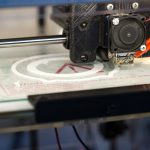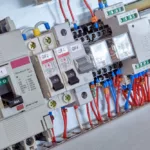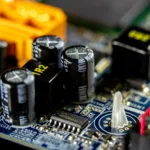
Introduction
The ultimate expansion of the Internet of Things (IoT) is a driving force behind a more connected and efficient world. The design and deployment of wireless IoT systems have become more accessible and versatile thanks to advances in technology and standards. It design eliminates the need for physical cables and offers flexibility, scalability, and mobility to IoT deployments across various sectors—from healthcare to agriculture. Understanding the basics of wireless IoT is critical for developers and designers to innovate and create connected solutions with greater ease and efficiency. This comprehensive blog explores the key aspects that contribute to the ease of wireless IoT design in detail.
Understanding Wireless IoT: The Need for Wireless IoT Design
IoT devices require robust connectivity to communicate the collected data to other devices or a central server. Traditionally, this involved extensive wiring, making the system complex and limiting its scalability and flexibility. However, the ease of wireless IoT design drives innovations in smart technology, improving operational efficiencies and enhancing user experiences across multiple domains. It is a network of interconnected devices—things—that communicate and share data through wireless protocols without human intervention, ensuring easier and more flexible installations and adaptations. These devices, ranging from simple household objects and sensors to complex industrial systems, leverage wireless connectivity to enhance operational efficiency and enable new services.
Core Components of Wireless IoT System
The core components include sensors and actuators, microcontrollers, wireless modules, and cloud services. Together, these elements connect, manage, and control a wide array of devices and communicate over the network to execute desired actions. Additionally, each of these devices ensures the efficiency, reliability, and security of a wireless IoT system.
Key Wireless Technologies in IoT Landscape
The selection of wireless technology is crucial and depends on factors like range, bandwidth, power consumption, and environmental conditions. Commonly used wireless technologies in IoT include:
- Wi-Fi: Wi-Fi is the most common and best choice for high data rate applications within limited areas. Its high throughput and easy integration make it ideal for residential and commercial environments.
- Bluetooth and BLE (Bluetooth Low Energy): Bluetooth, especially BLE, is ideal for short-range, low-power applications requiring low power consumption.
- Zigbee and Z-Wave: These technologies are best suited for creating mesh networks in smart home applications and other automation systems.
- Cellular Networks (LTE, 5G): These innovative technologies are useful for IoT applications requiring mobility and higher data rates, like fleet tracking.
- LPWAN (Low Power Wide Area Network) Technologies: They include LoRaWAN, Sigfox, and NB-IoT, which are suitable for long-range communications at a low bit rate, such as utility meters and agricultural sensors.
Advantages of Modern Wireless Protocols in IoT Design
Modern wireless protocols are designed to be robust and energy-efficient, supporting the deployment of IoT devices in varied environments with less interference and greater reliability. The primary advantage is the elimination of physical wiring. Other notable benefits include:
Reduced Complexity
These devices are generally simpler to design and deploy than their wired counterparts. The lack of cables reduces material costs and installation time as well as diminishes the physical constraints imposed by wired infrastructure. Cable complexity can be particularly cumbersome in environments like old buildings or rotating machinery.
Improved Aesthetics and Safety
In consumer applications such as smart homes, wireless technology offers an aesthetic advantage by eliminating unsightly cables. It also enhances safety by reducing the hazards associated with exposed wires, especially in wet or high-traffic areas.
Cost Efficiency
The costs associated with developing and deploying wireless IoT systems have significantly decreased due to the lack of cables, availability of affordable components, and competitive service offerings from cloud providers.
Real-Time Data Access
These devices facilitate real-time data collection and analysis, enabling immediate decision-making and action. For example, in a smart home, sensors can instantly detect changes in temperature or humidity and adjust the heating or cooling systems accordingly without human intervention.
Easy Integration and Scalability
These systems are designed to be easily scalable, allowing the addition of new devices without significant changes to the existing network infrastructure. This modularity enables businesses to start small and expand their IoT solutions as needed.
Remote Monitoring and Control
Wireless technology allows the remote monitoring and control of devices, which is invaluable in many sectors. For instance, in healthcare, patient monitoring devices can send real-time data to healthcare providers or in industrial applications where machinery can be controlled from a central location.
Increased Device Longevity and Lower Energy Consumption
Modern wireless technologies like BLE and Zigbee are designed to consume little power, which prolongs the battery life of IoT devices and reduces maintenance and operating costs.
Future Potential in Wireless IoT Design
The future of wireless IoT is incredibly promising, with ongoing advancements in technology continually expanding its potential applications. With the widespread proliferation of 5G, its high speed and low latency will enable more complex and responsive IoT applications, potentially transforming entire industries like transportation and manufacturing.
Takeaway
Wireless IoT technology has significantly simplified the design and deployment of IoT devices, providing flexibility, scalability, and a host of other benefits. The continued innovations in wireless technology are expected to ease IoT integration further, making it an even more integral part of our daily lives. As such, understanding the nuances of wireless IoT design is crucial for developers and companies looking to capitalise on this technology’s vast potential.



















